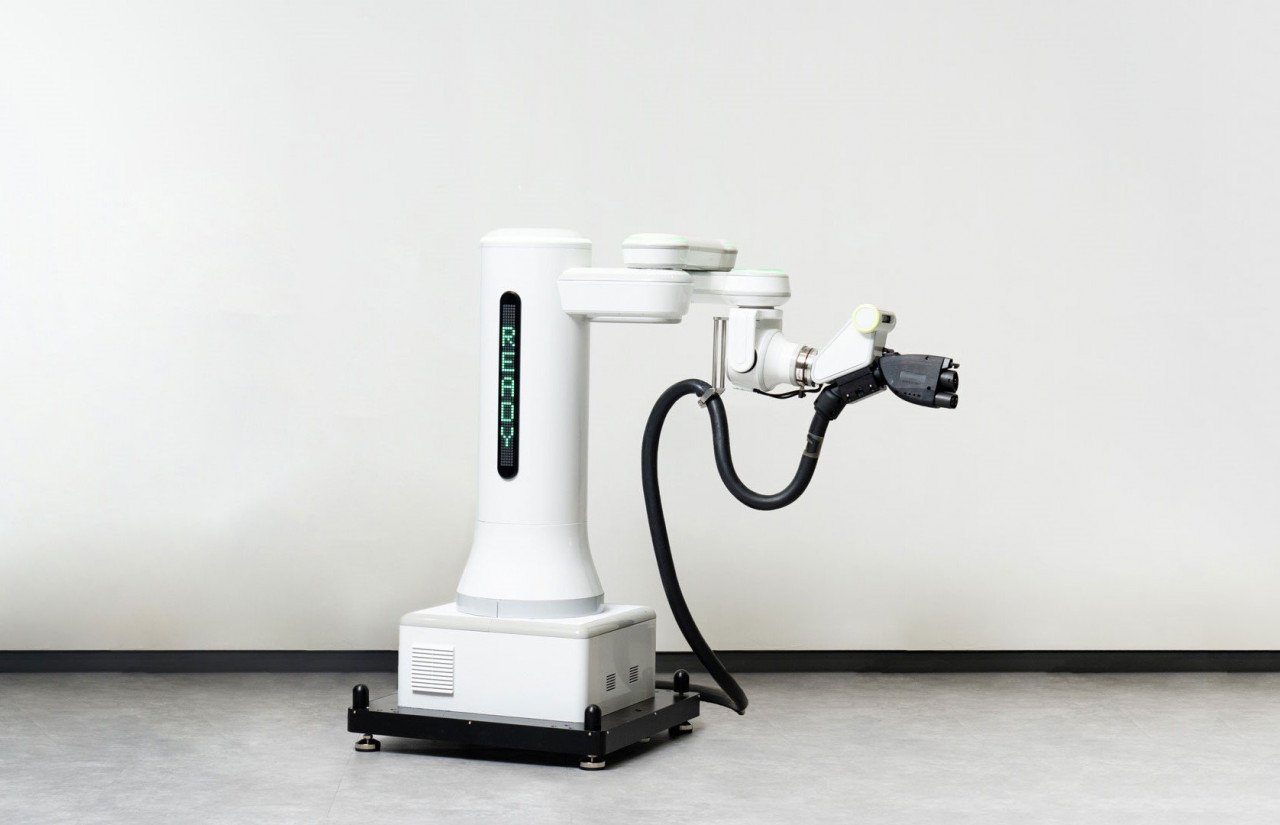3 minutes reading time
(500 words)
Hyundai demonstrates automatic Charging robot for Electric Vehicles
Hyundai Motor Group has developed an automatic charging robot (ACR) for electric vehicles, which can communicate with the EV and automatically open up the charging port to plug in.
The ACR is a one-arm robot capable of plugging a cable into an EV's charging port and removing it again once charging is complete. In a video released by the company, a Hyundai IONIQ 6 parks autonomously in an EV-charging bay. Once the vehicle is stationary, the ACR communicates with the vehicle to open the charging port, calculating the exact location and angle through a camera mounted inside.
The robot then picks up the charger and fastens it to the vehicle's charging port, thus starting the charging session. Once charging is complete, the robot removes the charger, returns it to its rightful place, and closes the cover of the vehicle's charging port.
The robot then picks up the charger and fastens it to the vehicle's charging port, thus starting the charging session. Once charging is complete, the robot removes the charger, returns it to its rightful place, and closes the cover of the vehicle's charging port.
"The ACR will help to make EV-charging easier and more convenient, especially in dark environments. It will also improve accessibility, particularly for people with mobility barriers, as charging cables become thicker and heavier to enable high-speed charging," said Dong Jin Hyun, Head of Robotics Lab, Hyundai Motor Group. "We will continue developing the ACR for increased safety and more convenience, so that all EV customers can soon benefit from using it at charging stations."
The ACR is an example of the group's advanced robot technology, Hyundai claims. The group's Robotics Lab has considered diverse variables in developing the ACR, such as the parking location of the vehicle, the shape of the charging port, the weather, potential obstacles and weight of the charging cable.
In order for a robot to fasten a charger to the charging port securely, software technology that can simultaneously calculate these multiple variables is required. To this end, the company has developed an algorithm that applies 3D camera-based AI technology to robots, and next-generation control technology based on this application allows robots to accurately handle heavy chargers.
Given that that most EV chargers are installed outdoors without cover, the Hyundai engineers built a bespoke outdoor electric vehicle charging station at its R&D center and evaluated performance in various conditions. As a result, the ACR has secured a waterproof and dustproof grade of IP65 , and its performance has been greatly improved so that it can be stably operated even in extreme environments.
In addition, engineers have installed a safety pole with a built-in laser sensor around the robot to prevent possible accidents by enabling it to detect stationary and moving obstacles.
The Hyundai Group expects automatic charging robots to significantly increase convenience of EV charging, and if combined with autonomous parking control systems in future, can improve utilization by sequentially charging several parked vehicles.

EverCharge, PassKey to develop BESS for EV Charging stations
Subsidiaries of South Korea-based SK Group - EverCharge and PassKey - are partnering to develop a Battery Energy Storage System (BESS) to supplement the latter's EV charg...
https://etn.news/buzz/evercharge-passkey-battery-energy-storage-for-ev-charging-usa




















